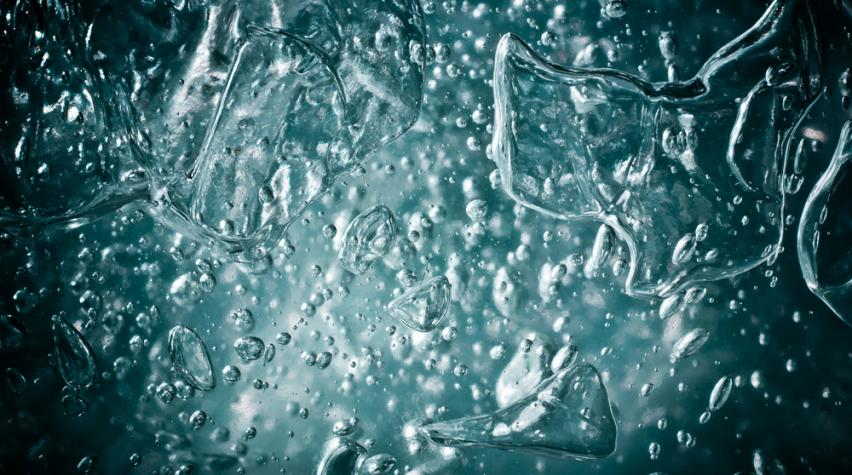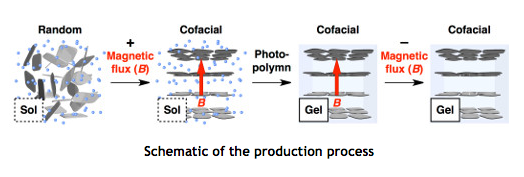
Scientists from Japan's RIKEN Center for Emergent Matter Science and the National Institute of Material Science and the University of Tokyo have developed a new hydrogel whose properties are dominated by electrostatic repulsion, rather than attractive interactions.
A press relsae from RIKEN expalins that work on the new material began with the discovery that when titanate nano-sheets are suspended in an aqueous colloidal dispersion, they align themselves face to face in a plane when subjected to a strong magnetic field. The field maximizes the electrostatic repulsion between them and entices them into a quasi-crystalline structure. They naturally orient themselves face to face, separated by the electrostatic forces between them.
Creating the new gel
Using this discovery, the scientists arrange layers of the sheets in a plane. They then fixed the magnetically induced structural order by transforming the dispersion into a hydrogel using a procedure called light-triggered in-situ vinyl polymerization. Essentially, pulses of light were used to congeal the aqueous solution into a hydrogel, so that the sheets could no longer move. This created a material with properties dominated by electrostatic repulsion.

Potential uses
Yasuhiro Ishida, head of the Emergent Bioinspired Soft Matter Research Team, commented that the discovery was surprising, "but one that nature has already made use of." Cartilage owes its ability to allow virtually frictionless mechanical motion within joints, even under high compression, to the electrostatic forces inside it. Electrostatic repulsive forces are used in various places, such as maglev trains, vehicle suspensions and noncontact bearings, but until now, materials design has focused overwhelmingly on attractive interactions.
Ishida also added that the team hoped to embed anisotropic repulsive electrostatics within a composite material, based on inspiration from articular cartilage. "Materials of this kind could be used in the future in various areas from regenerative medicine to precise machine engineering, by allowing the creation of artificial cartilage, anti-vibration materials and other materials that require resistance to deformation in one plane," he aserted.
For more on the reserach, as well as graphics illustrating its properties, see the original press release here.


